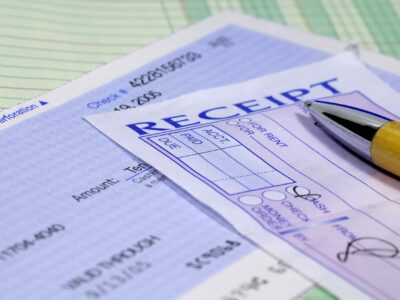
To ensure accuracy, it’s essential to calculate retained earnings properly, as it directly impacts the financial statements. A trial balance is a report businesses use to catch accounting errors. If they are unequal, you can go back to your journal entries to find where the error originates from.
- Consider an example where goods worth $5,000 are sold to john but the transaction is not recorded in the journal at all.
- Educated and well-trained staff are more likely to identify and correct errors proactively, thereby enhancing the accuracy of financial statements.
- Error in accounting incurs as a result of the wrong entry recorded by bookkeeper or accountant.
- In the analog days, people would record transactions in two separate books — the general journal and the general ledger.
- If the difference between the recorded amount and the correct value is evenly divisible by nine, it is highly likely that a transposition error has occurred.
Proven Techniques for Finding Balance Sheet Errors

Therefore, identifying and correcting these errors is not just a matter of regulatory compliance but also of safeguarding the company’s financial stability and ensuring stakeholder confidence. Transposition errors occur when figures are inadvertently switched in their order (e.g., writing “63” instead of “36”), while math errors arise from incorrect calculations. These mistakes https://www.facebook.com/BooksTimeInc can lead to significant discrepancies in the balance sheet totals. Transposition errors, while seemingly minor, can have far-reaching consequences if left unchecked.
- Companies prepare it at the end of every accounting period or quarter, or semi-annually or annually.
- Transposition errors made in the trading world are sometimes called “fat-finger trades.” In one famous example, a Japanese trader accidentally ordered 1.9 billion shares in Toyota.
- An investigation revealed a network of dishonest transactions meant to hide debt and exaggerate revenues.
- Our work has been directly cited by organizations including Entrepreneur, Business Insider, Investopedia, Forbes, CNBC, and many others.
How To Correct?

Duplication errors are the result of entering an income or expense entry twice. That entry could be an employee’s salary or a budgeting item used to make an important financial decision. The potential impact of a data entry error can vary from something minor to a major mishap, such as underpayment or overpayment of a vendor. Chartered accountant Michael Brown is the founder and CEO of Double Entry Bookkeeping. He has worked as an accountant and consultant for more than 25 years and has built bookkeeping financial models for all types of industries. He has been the CFO or controller of both small and medium sized companies and has run small businesses of his own.
Incorrect Use of Accounting Principles
- An omission error, or a false negative, is the accounting problem of forgetting an entry like a purchase or sale.
- The Motley Fool Ascent is 100% owned and operated by The Motley Fool.
- For instance, cash sales of $2,500 have been recorded on the debit side and credited to bank account.
- With AI-powered automations and data synced from third parties, such as banks or payment platforms, errors can be introduced if you don’t stay on top of your books.
- Seamlessly enter balances, record payments, send estimates, and so much more!
- If the balances don’t add up or you have an unmatched entry, you likely have a reconciliation error.
- For example, if a bookkeeper is recording an expense for $37, but he notes $73 in the books, that is a transposition error.
Errors in your accounting software can be introduced by things like setting up your books incorrectly, not syncing with third-party applications, or failing to check work that’s been automated. Entry reversal throws off the accuracy of your books and financial statements. When it comes time to balance the books, your assets include an additional amount that doesn’t exist and your liabilities are short an expense. A trial balance is simply a listing of the debit and credit balances for each account in the accounting ledgers. Accurate financial data is the cornerstone of informed decision-making and regulatory compliance.

An unbalanced trial balance
- The first one is the whole transactions are missing from the accounting record.
- For example, significant deviations from historical trends in liquidity ratios, profitability metrics, or asset turnover ratios can signal inaccuracies in the recorded figures.
- You might make a transposition error when writing a two-digit number or a string of numbers (e.g., 1835 vs. 1853).
- Errors that result in an unbalanced trial balance are usually the result of a one sided entry in the bookkeeping records or an incorrect addition.
- Analyzing financial ratios and trends over time can help detect anomalies that may indicate errors.
- Omission errors involve failing to record transactions in the balance sheet.
- Transpositional errors, which tend to occur in accounting firms, brokerages, and other financial services providers, fall under the broader category of transcription errors.
While seemingly innocuous, such mistakes can propagate throughout financial records, distorting the accuracy of critical data and potentially leading to misguided business decisions. In the realm of accounting and bookkeeping, transposition errors are a common occurrence that can have significant what is one way to check for an error caused by transposed numbers? ramifications if left unchecked. These errors arise when digits within a numerical value are inadvertently swapped or transposed, leading to an inaccurate representation of the intended figure. If your cash account and bank statement are showing different figures, it’s time to check each transaction on both sides.
![]()
